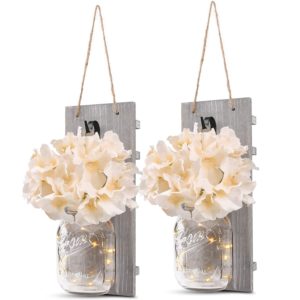
- Color: Grey
- LED lights
- 6 Hours Timer

- 2 Pack
- Handcrafted
- Gift Box Package

- Polystyrene
- Premium Quality
- Modern design

- 7-Opening Collage
- High Quality Metal
- Family Tree Design

- Set of 4
- Premium Quality
- Awesome Gift
Choose the Best Wall Hanging
Customer’s Choice: the Best Rated Wall Hangings
39 users answered this survey. Please help us improve this review!
Table of Contents
Wall Hangings FAQ:
What should I hang on my living room wall?
Interior design can be easily compared to making art pieces. Just like artists, interior designers really put the part of their soul into the interiors of a house where they or their clients stay, at least, for a few hours per day. One of the most creative spaces in a house is a living room that may easily transform into a relaxing zone or a house party area depending on the circumstances. That is why it’s important to decorate the walls of a living room with some creativity but with certain limits to avoid imbalance.
First and foremost, the size and location of a living room have to be taken into account. The sky’s the limit when you decorate the walls.
For instance, here is how you can decorate the blank walls of living rooms:
- Murals, graffiti and factory-made wallpapers can drastically change the feel and space of a living room. But keep in mind that large paintings are not suitable for hanging over the textured wallpapers;
- Add panels to the walls – think of making the collages with different fabrics, stones, shells and beads;
- Photographs are another great way to decorate the walls in your living room. Bright photo frames or an unusual arrangement of the images will help to add a few accents. Family photos always make a room much more comfortable.
- Bright posters are a great and easy way to decorate the walls in the living room of young people. Pop art posters may look great: they will add a retro touch to the modern design and add accent to any other finish;
- Metal decorations can also be placed on the walls;
All these decorations can help to make your living room bright, modern and interesting. But these are only a few options among countless ways to decorate a living room. If you are not sure how to decorate it, visit the specialized websites, or hire a professional interior designer.
What should I hang above my couch?
Usually, the wall behind a couch instantly attracts attention. Even if the whole room is stuffed with furniture this wall remains relatively empty. There are many things that you may do to decorate the wall above the couch. Here are a few options that you may consider:
- Paintings that repeat the sofa’s pattern or shape. The collage of a few paintings or family photos in the elongated frames may also look good;
- Tapestries help to create an atmosphere of comfort and coziness in a traditional living room interior;
- Paint the wall above the couch – the floral or abstract patterns may add some contrasts and additional lines to the room interior;
- Bright accents are appropriate when your living room is mostly light, with the furniture of the same relaxing colors;
- Moldings should not be limited to white color and typical forms – think of flowers, silhouettes of people, trees or abstract elements;
What are the 7 elements of interior design?
Creativity and flair are important for interior designs because it is just boring to do the same things and patterns. But without the key elements and balance creativity can easily become chaos. That is why certain interior design rules have to be considered, if not followed. 7 elements may help to create without limits but to achieve harmony and balance in any interior:
1) Space
Any interior has space – that is the fundamental concept. As you rule, you can’t change this space (unless you are able to break or build extra walls/floors/ceiling). This major limitation can boost your creativity. If you are an interior designer you work with the three-dimensional space (width, height, length).
Designers usually divide the entire space of the room into 2 categories: negative and positive. Negative space is the space between the objects, traffic paths and open space under the ceiling or under the couch. Positive space is the space occupied by all objects in the room.
2) Lines
Dynamic, vertical and horizontal lines can shape the space and draw attention to the desired objects. The furniture, draperies and structures create the lines for the contrast. For example, tables and similar surfaces make the majority of horizontal lines. Stairs or shelves can create dynamic lines. Typically, interior designers pick one dominant feature line and then add shorter vertical and dynamic lines.
3) Form
All objects in the interior have a certain shape that creates the form of the entire room. Most forms are natural or geometric. Hard lines and square edges can be matched to organic forms of plants and wooden furniture. There are open and self-contained forms. Designers like to repeat the dominant form of the room in minor objects in this room.
4) Light
To expand or squeeze the space without actually doing it you may play with natural/artificial light in the interior. Designers typically break the light into the categories:
- task lighting with a straightforward purpose;
- accent lighting (to emphasize objects);
- mood lighting (to add feels and ambiance);
Different interiors need different lighting. Office spaces are usually filled with bright lights on a day and night. While bedrooms should balance all three categories. The trick is to learn how to manipulate lighting to make the space interesting.
5) Color
Color is one of the most important elements in the interior. It can create mood, divide the space and make the small space visually larger. Properly used colors can trigger good memories and stir emotions. Colors can also stimulate different physical and psychological responses. For instance, blue and green colors can evoke calmness that is why they are picked for adult and children bedrooms. Combined with artificial and natural lighting the colors can do the miracles even with the most standard and plain interiors.
6) Texture
All tactile surfaces of objects and finishes are defined as texture. This element of interior design should not be neglected or overlooked. Because textures can bring unique layers and dimensions to any room. By mixing different colors, patterns and fabrics you add space to the interior. Glossy, coarse and smooth textures may freshen the room drastically.
7) Pattern
Do not confuse it with colors because patterns offer repetitive designs found in furnishings, wallpapers and fabrics all over the interior. There are different types of patterns – the most common are stripes, animal prints, motifs, geometric lines, etc. Complex patterns and contrasting colors can make even the dullest room more cheerful and visually big. Keep in mind that large-scale patterns can make the focal point to the whole room.
What can I do with a blank bedroom wall?
Anything. For example, you may follow the trends and add some huge colorful paintings to the blank walls after painting them white. Or you can choose the classic design and just paint the wall beige, white or crème color. Then you may decorate this wall in such a way:
- Add millwork to make the room more interesting if you have white walls;
- To transform the space you may add wainscoting, molding and rails;
- Wooden pallet walls is a new eco-friendly trend of decorating your bedroom.
- Add a wooden world/state/city map to create a beautiful accent wall;
- Sconces and large mirror panels or ledges will look awesome on blank bedroom walls;
- Add a contrast color to the white wall – black or dark blue squares in the middle of a white wall;
- Do not limit yourself with solid colors. Horizontal stripes or circles can add accents;
- You may create a graffiti or mural wall;
- Add a collage of photos, paintings or even small old windows;
- Add hand-crafted ceramic plates;
What is the 60/30/10 decorating rule?
This is a classic décor rule that interior designers use to create a harmonious color palette in any room. It means that 60% of the entire space in the room should be painted white or beige or any other dominant color, 30% of the space should have a secondary texture or color. And only 10% must be given to the accents.
Surely, you don’t have to follow this rule when decorating your house or office. But the balance also matters. For instance, if you decorate a living room and paint all walls in one color, here you go, you already follow this rule – because the walls occupy about 60% of the entire space. Large furniture items, chairs, draperies, bed linens, and rugs occupy about 30%. You can match them with the basic color.
Throw pillows, wall hangings, bedside tables and candles typically serve as accents, the rest 10% according to this decorating rule. You may add some contrast to major colors with these accents.






I have been on the hunt for ocean themed décor for awhile now. Not typical beachy stuff but vibrant pops of color. Those WordlBazaar fish are exactly the kind of items I am looking for! They will go perfect next to the mirror above our fireplace. I am going to check out what else they have. Great reviews!
After scrolling through Pinterest I decided to try some diys but they all failed miserably so it’s back to online shopping for me hahah! The mason jar decor is so cute, it would look amazing with some dried flowers.